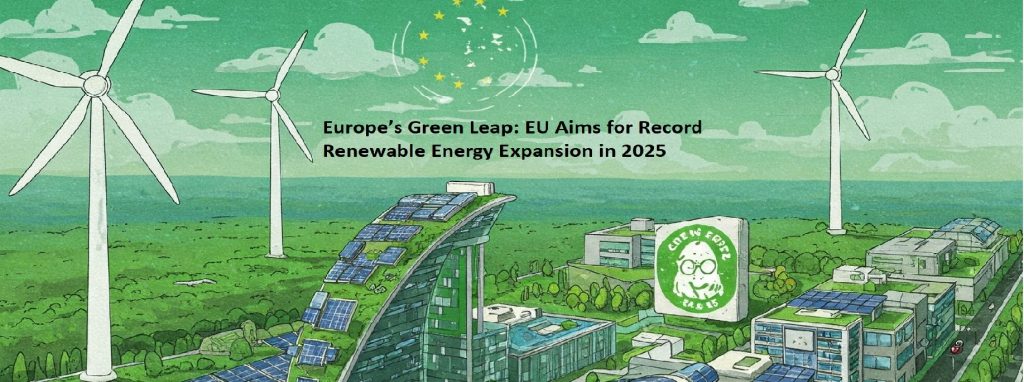The European Union plans to add 89 GW of clean energy capacity in 2025, setting new records despite ongoing challenges.
In a significant step toward its climate ambitions, the European Union is projected to install a record-breaking 89 gigawatts (GW) of new renewable energy capacity in 2025. According to the latest estimates from the European Commission, this includes 70 GW from solar energy and 19 GW from wind energy. This achievement is a key part of the EU’s broader strategy to transition away from fossil fuels and reduce its dependence on Russian gas by 2027.
This projected growth not only signals the EU’s commitment to climate goals but also reflects increasing momentum in the global transition to clean energy sources.
Meeting Climate Goals with Bold Targets
The EU’s climate roadmap, under its Fit for 55 package, aims to reduce greenhouse gas emissions by 55% by 2030 compared to 1990 levels. Achieving this requires massive scaling of renewable infrastructure, and the 2025 targets are a critical milestone on that path.
In 2024, the EU added approximately 63 GW of renewable capacity. The leap to 89 GW in 2025—an increase of over 40%—represents an aggressive acceleration of solar and wind energy investments. Experts highlight that solar additions alone are expected to grow by nearly 30% year-on-year.
Key Drivers of the Surge
Several factors are fueling this renewable boom:
- Policy Support: EU directives continue to incentivize member states to prioritize green energy. Although some subsidy programs are being revised, countries like Germany, Spain, and the Netherlands remain leaders in clean energy deployment.
- Energy Security: The war in Ukraine and subsequent energy crisis revealed Europe’s vulnerability to fossil fuel imports. Renewables now play a central role in safeguarding energy independence.
- Technological Advances: Solar panel costs have dropped by over 80% in the past decade, and wind energy efficiency continues to improve through better turbine design.
- Private Investment: There’s been a notable uptick in venture capital and institutional investments in renewable projects. In 2024 alone, over $180 billion was invested in renewable energy across the EU.
Challenges on the Horizon
Despite strong momentum, the renewable sector in Europe is not without hurdles. Some of the key obstacles include:
- Permitting Bottlenecks: Developers frequently face long delays in acquiring permits for wind and solar projects. In some regions, it takes up to 7 years to approve a single wind farm.
- Grid Constraints: Existing power infrastructure in many EU countries is not equipped to handle the increased influx of renewable energy, leading to bottlenecks in transmission and distribution.
- Reduced Government Incentives: Some nations are scaling back green subsidies due to budget constraints. This could affect project viability and investor confidence in the coming years.
Still, the European Commission has stated its commitment to simplifying regulations and accelerating permitting timelines to ensure progress remains on track.
Looking Toward 2030
The 2025 target is part of a broader strategy to install 600 GW of solar and 300 GW of wind capacity by 2030. This means the EU will need to maintain or even exceed the 70 GW solar additions annually—a target that requires both political will and private sector coordination.
To support this, the EU is working on new legislation that will streamline land access, fast-track approvals, and encourage smart grid technologies. If implemented successfully, Europe could become the global benchmark for clean energy transitions.
The EU’s projected 89 GW of renewable energy capacity in 2025 represents more than a technical milestone—it is a strategic move for energy security, economic development, and climate leadership. While significant barriers remain, Europe is setting a bold example that balancing ambition with action is not only possible but essential for a sustainable future.
#RenewableEnergy #EUClimateGoals #SolarEnergy #WindEnergy #GreenTech #EuropeEnergyTransition #CleanPower2025


